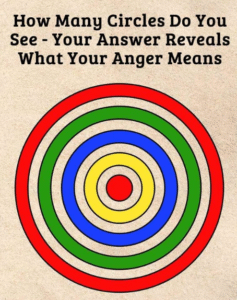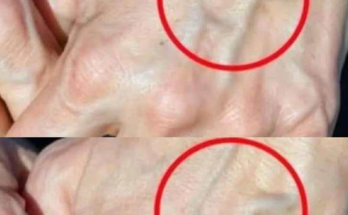The Number of Circles You See Determines If You’re a Narcissist: Exploring Optical Illusions, Personality, and the Myth Behind the Meme
In the digital age of bite-sized content and viral trends, it’s not uncommon to see psychological analysis boiled down to a single image. One particularly popular example is the optical illusion claiming that “the number of circles you see determines if you’re a narcissist.” At first glance, it’s an intriguing proposition—an image that can supposedly peer into your soul and reveal something as complex as narcissistic personality traits. But how much truth is there behind this viral meme?
Let’s start with the basics: optical illusions are visual tricks that deceive the brain. They often expose how our minds interpret shapes, depth, and color. The illusion in question typically involves a complex arrangement of overlapping or nested circles, often designed to test visual acuity or perception. The meme, however, layers on a psychological claim—stating that seeing more or fewer circles correlates with narcissism levels. This is where science and social media part ways.
Narcissism is a multifaceted psychological trait. According to the DSM-5, Narcissistic Personality Disorder involves a long-standing pattern of grandiosity, need for admiration, and a lack of empathy. Even outside of clinical diagnosis, narcissistic tendencies can manifest in everyday life. But there’s no evidence in psychological literature to suggest that how many shapes you see in an image can diagnose or reflect this complex personality trait.
What makes this meme compelling is its mix of pseudo-psychology and entertainment. People are naturally drawn to self-analysis, especially when it’s easy, instant, and wrapped in the aesthetics of a social media post. Just as horoscopes and personality quizzes attract millions, this optical illusion taps into the human desire for self-knowledge and categorization.
However, this is more myth than method. The number of circles you see depends more on your visual sensitivity and attention to detail than your personality. For example, someone with sharp eyesight or a keen analytical mind might see more circles simply because they’re more visually attentive—not because they’re narcissistic. Conversely, someone in a rush or viewing on a small screen might miss a few and get a different “result.”
Still, the meme isn’t without value. It invites people to engage with visual perception and psychology, even if the scientific basis is shaky. It can spark curiosity and dialogue about mental health, personality traits, and the way our brains process information. In that sense, it serves as a fun entry point rather than a definitive assessment.
In conclusion, while the illusion-meme hybrid claiming to measure narcissism based on how many circles you see is entertaining, it shouldn’t be taken seriously. It reflects a broader trend of reducing complex psychological ideas into easily digestible content. So, if you come across the image, enjoy it for what it is—a quirky, brain-teasing visual puzzle—but leave the personality assessments to actual professionals.
